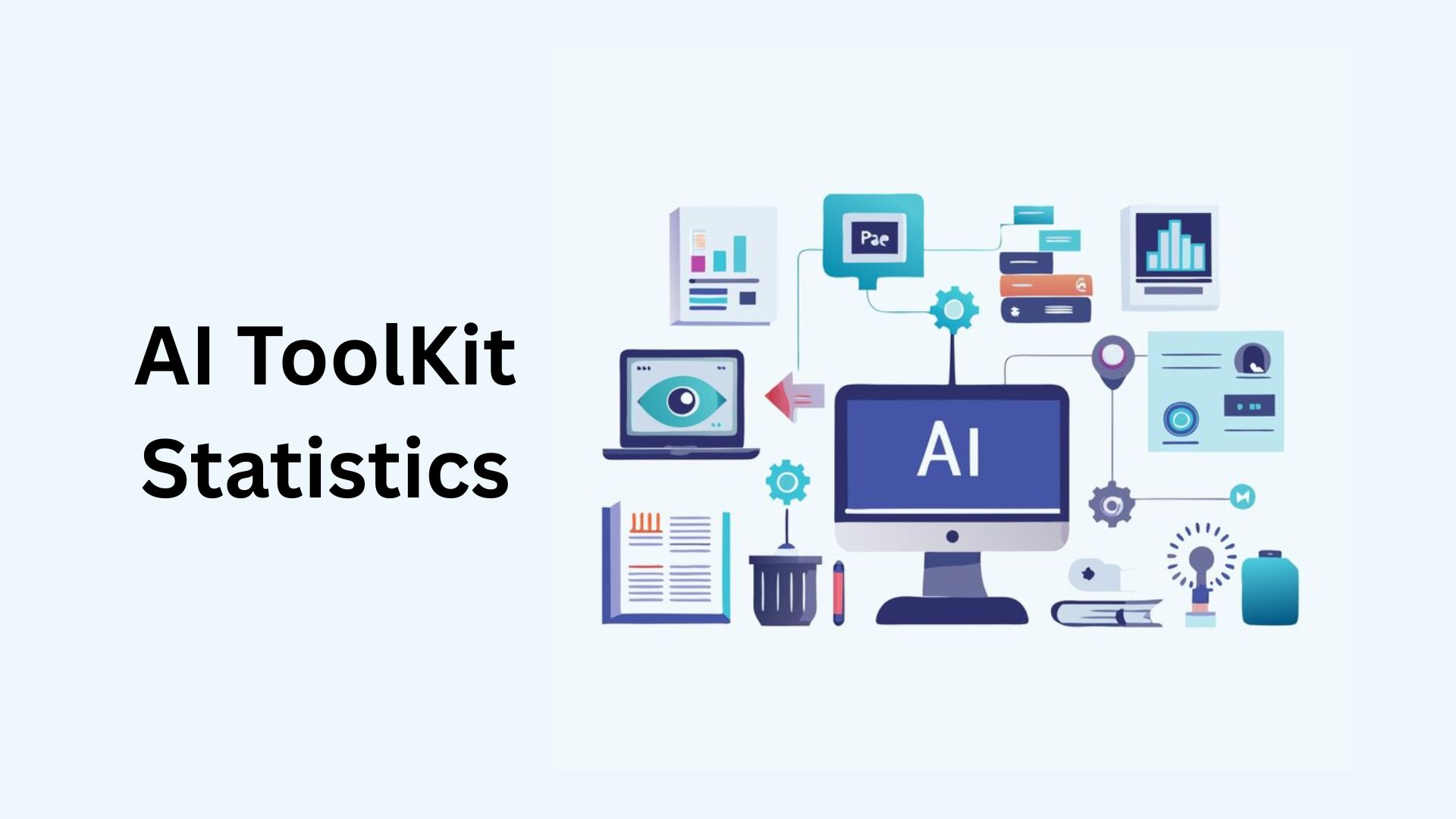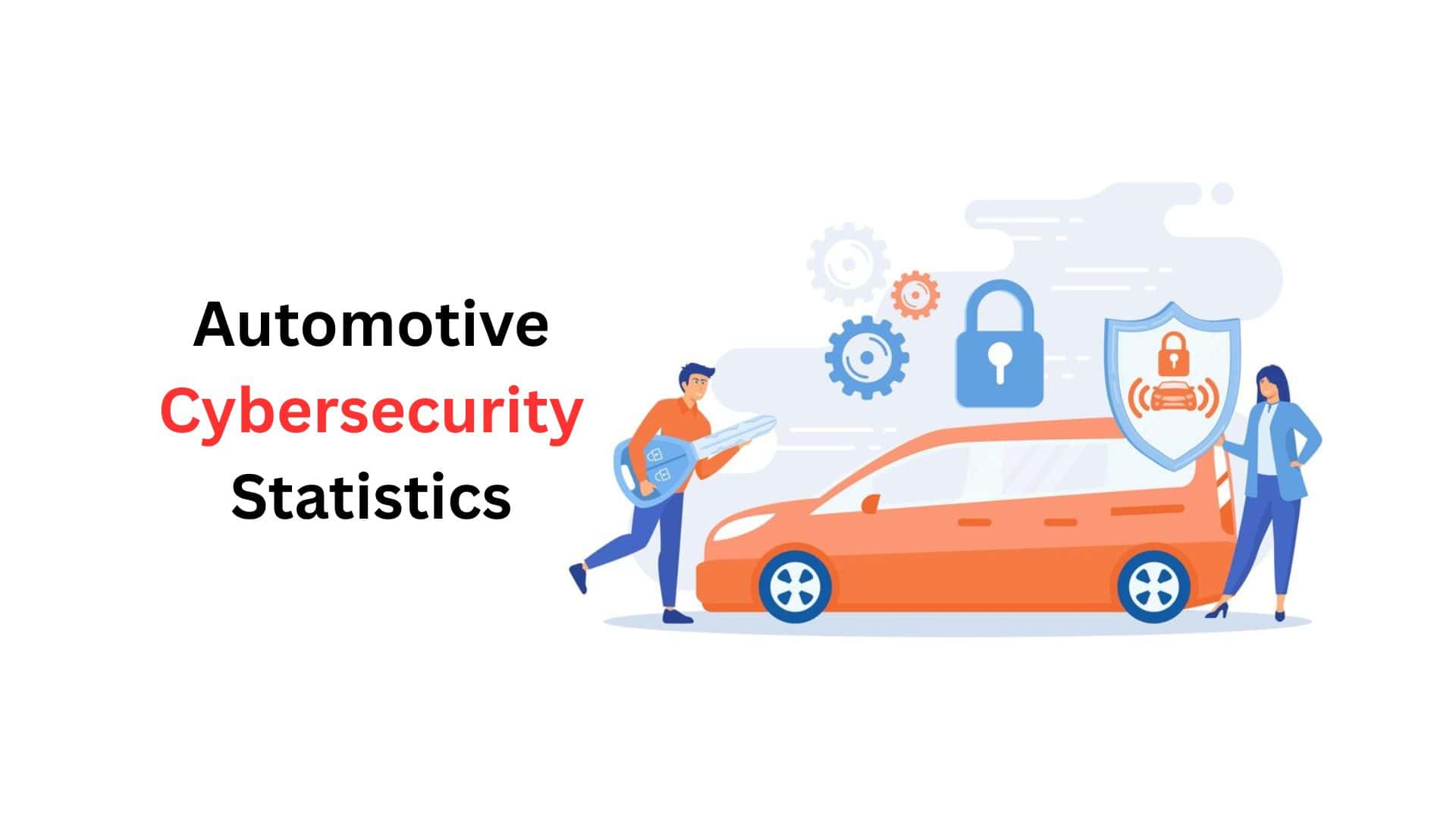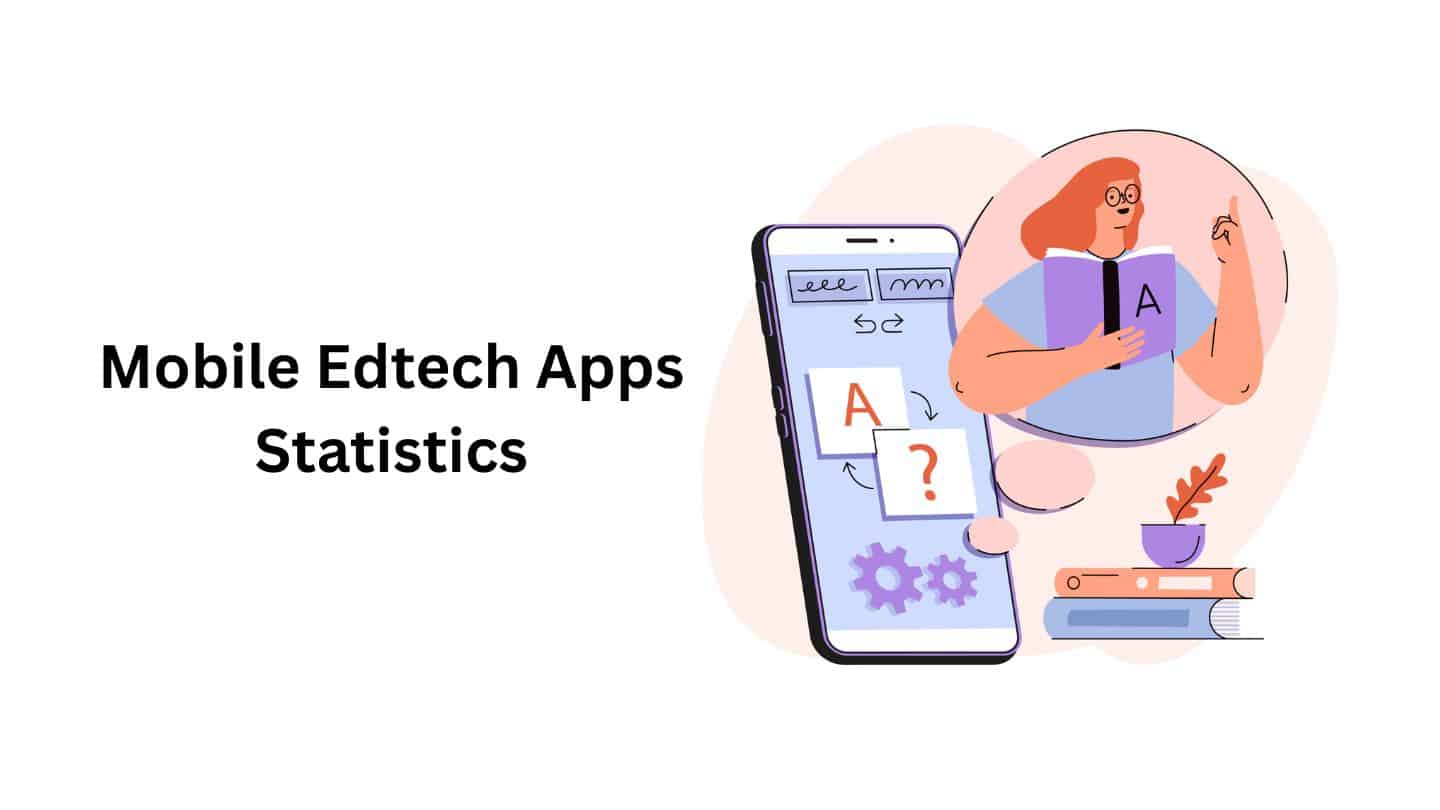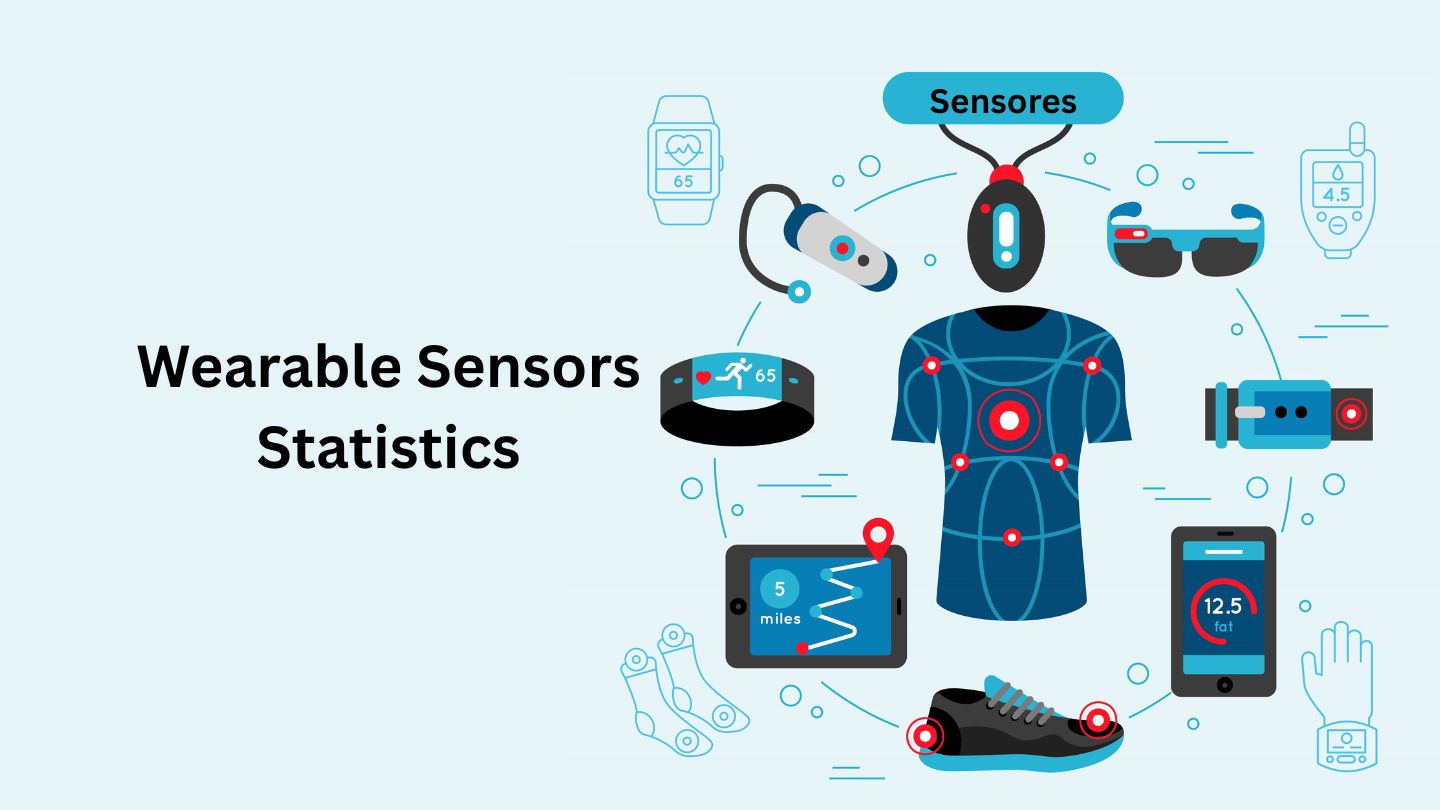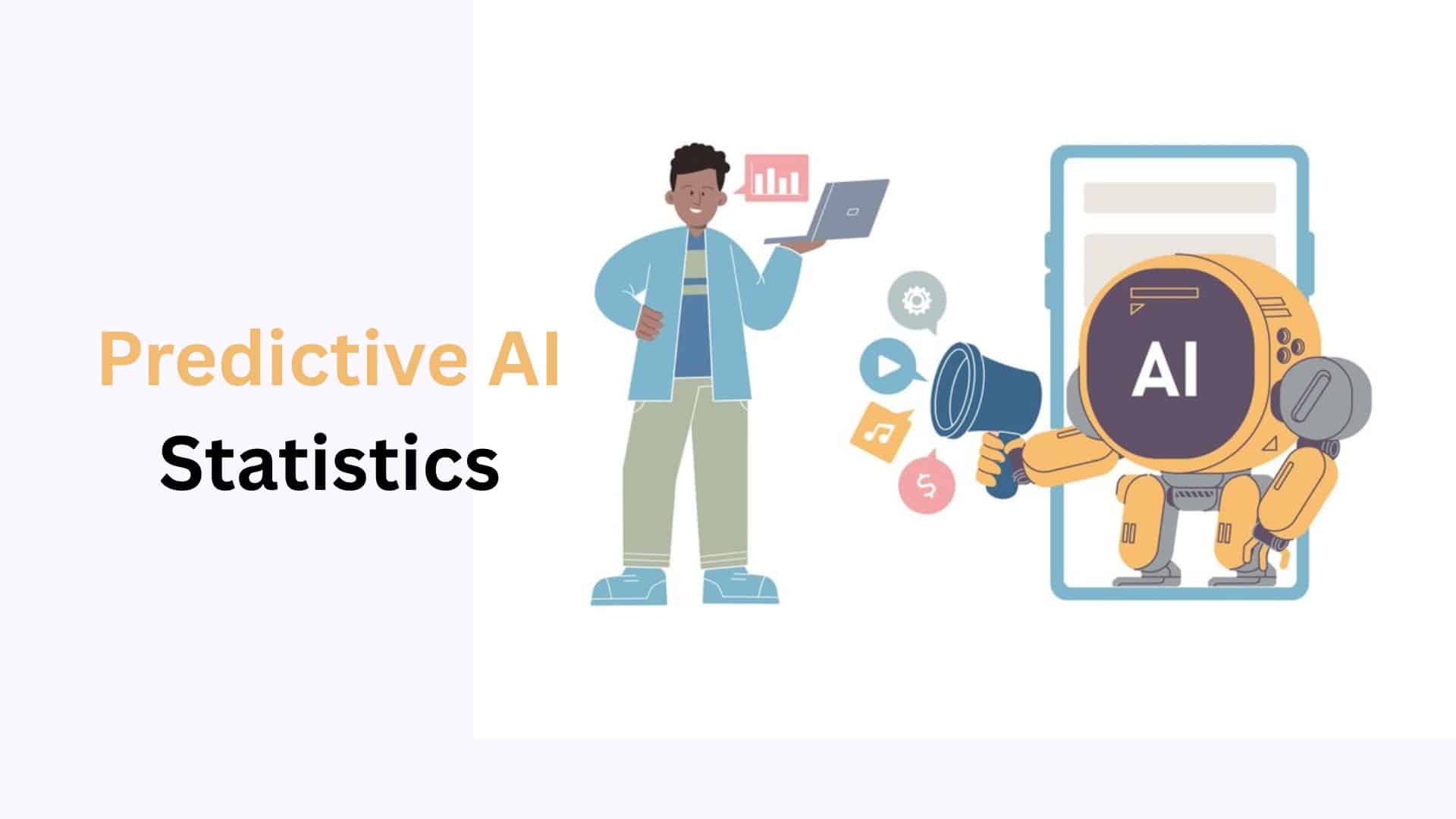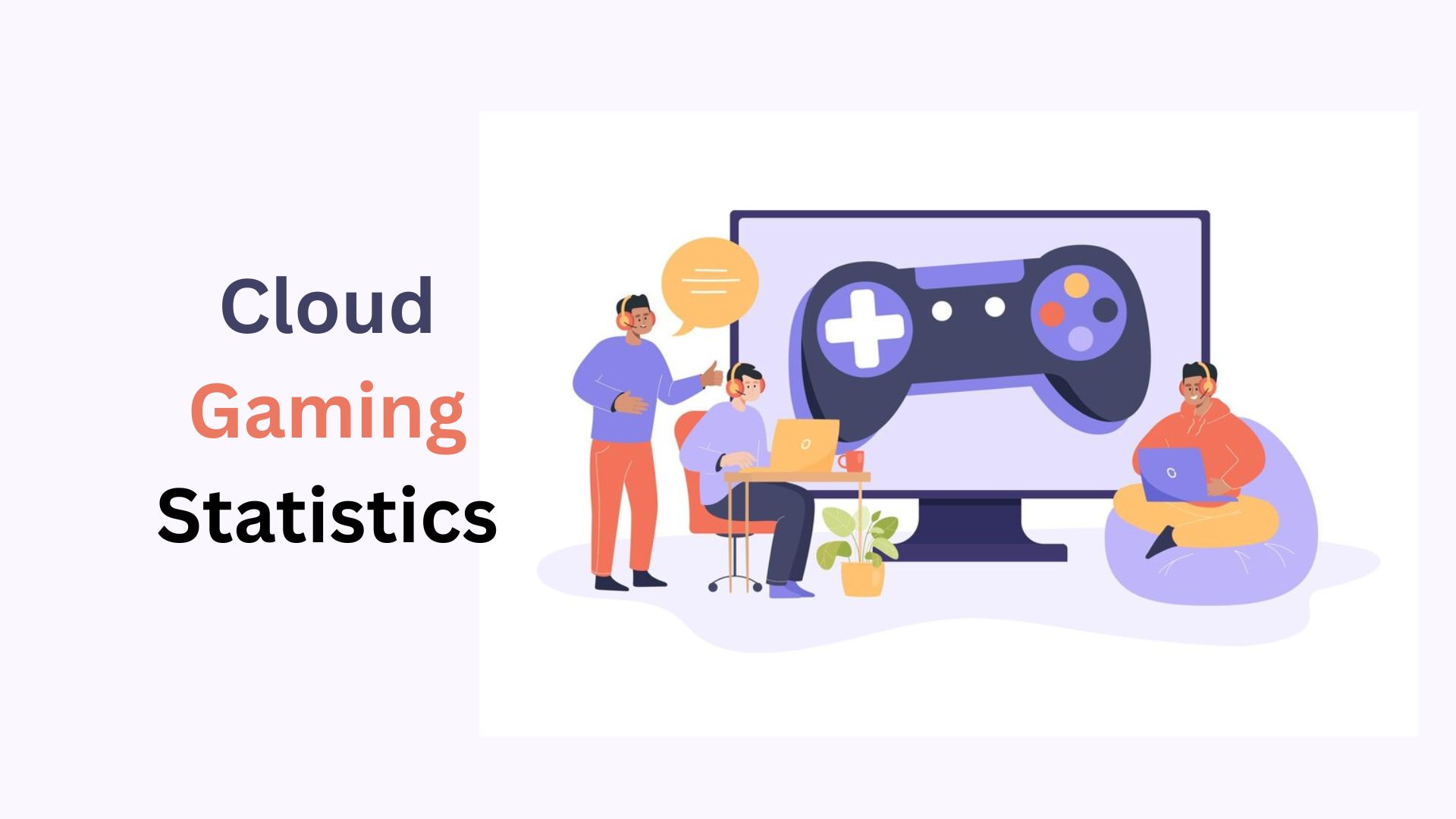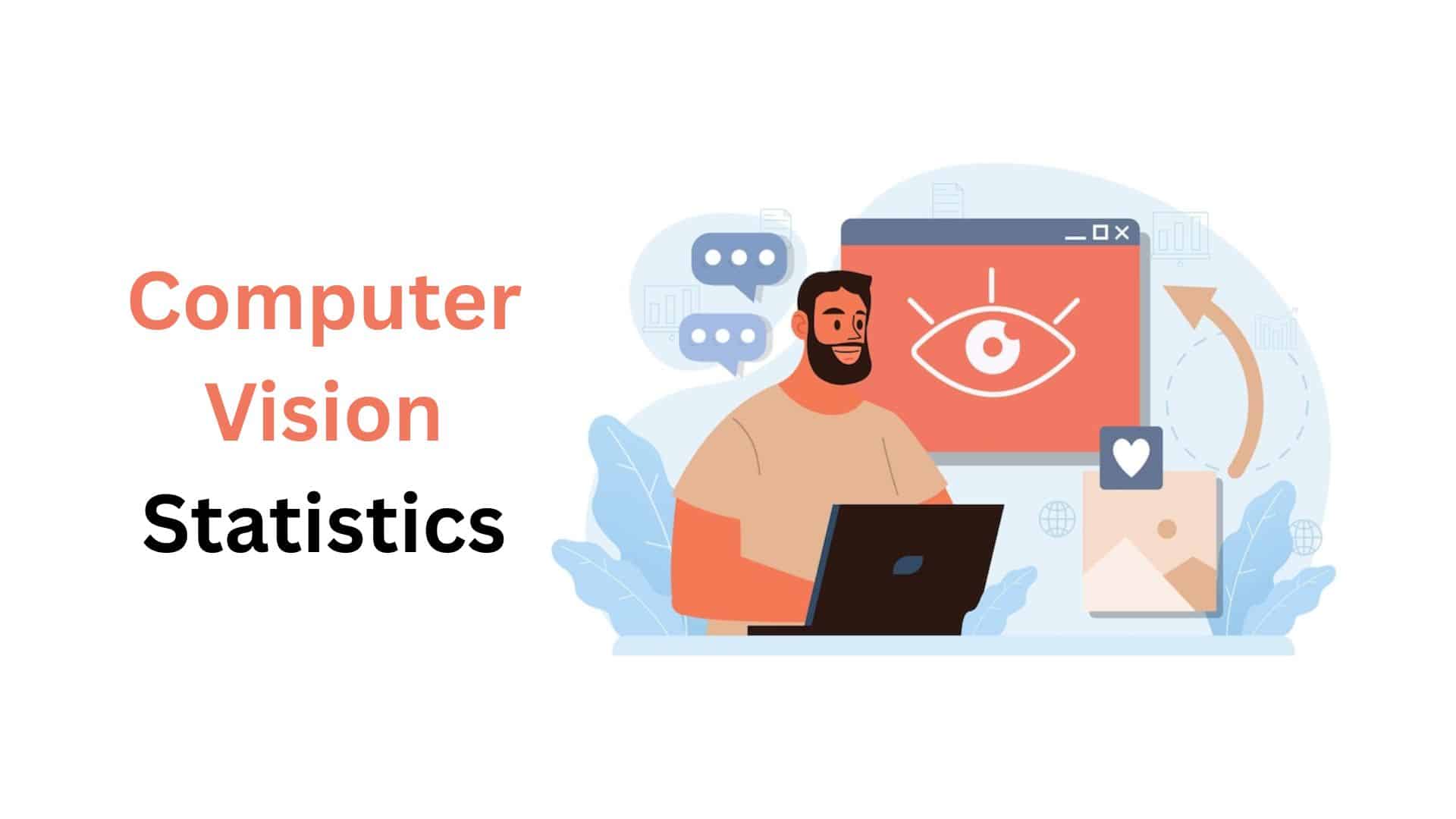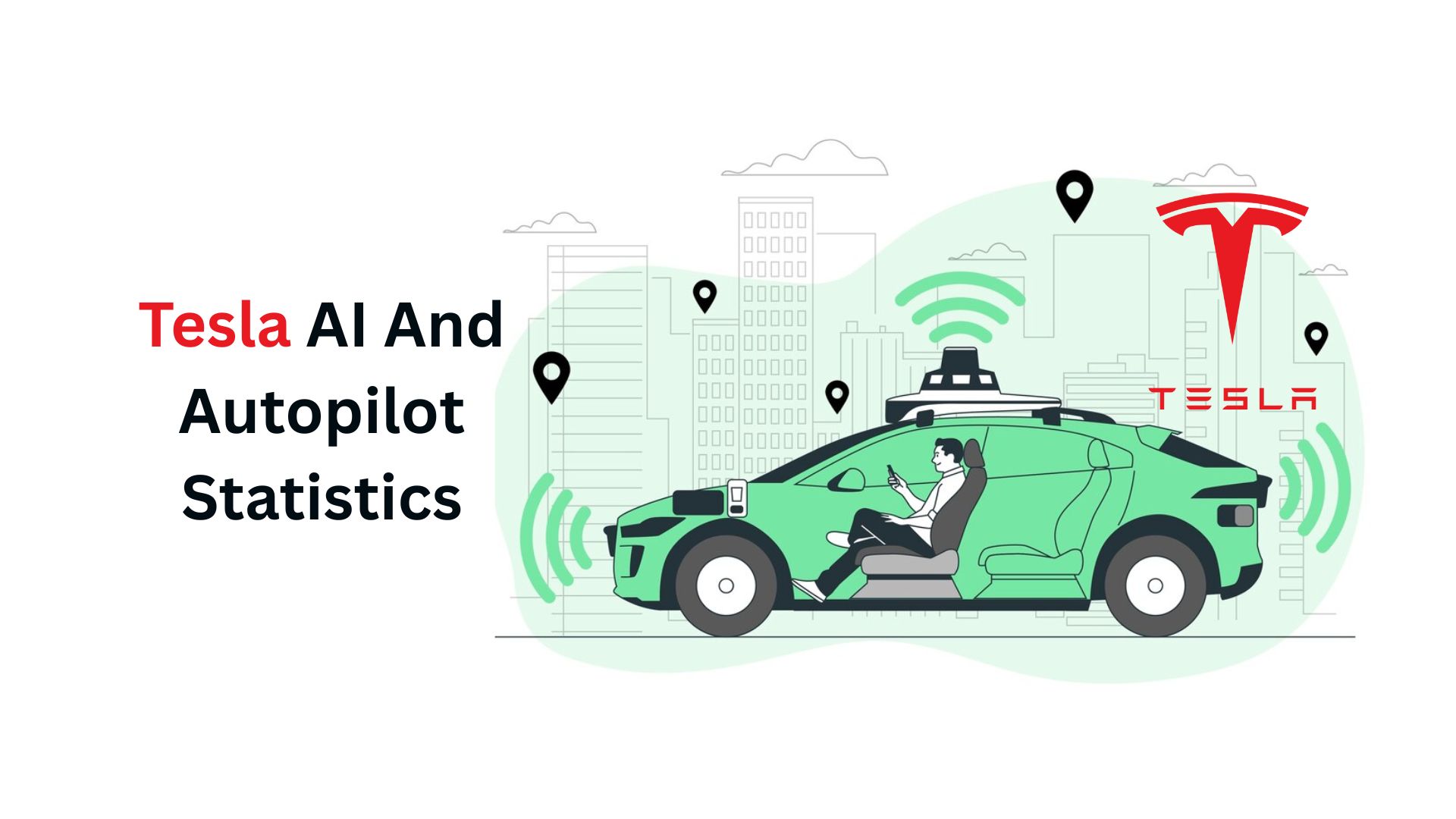Gen Z Statistics By Social Media, Workforce, Behavior, Impact Of COVID-19 And Difference Between Gen Z Vs Millennials

Updated · Feb 27, 2025


TABLE OF CONTENTS
- Introduction
- Editor’s Choice
- General Gen Z Statistics
- Gen Z Brand Preference Statistics
- Gen Z Social Media Statistics
- Gen Z Workforce Statistics
- Gen Z Behavioral Statistics
- The Impact Of COVID-19 On Gen Z’s Future And Present
- Leading Source Of Data Among Gen Z Customers Researching Products Globally
- Gen Z Smartphone Ownership Statistics
- Difference Between Gen Z vs Millennials
- Conclusion
Introduction
Gen Z Statistics: Generation Z, also called “Gen Z,” refers to people born between 1997 and 2012. The youngest of this group are still in school, while the oldest are finishing college and starting their careers. Gen Z is the first generation to grow up with the internet as a normal part of life. They have faced challenges like a global pandemic and rising living costs, which have influenced their values and attitudes.
These experiences make them a unique and important group to understand. This generation has grown up with the internet, social media, and new technology. Right now, about one-third of social media influencers are from Gen Z. In this article, we will look at important Gen Z Statistics, data, and trends about Gen Z in 2025.
Editor’s Choice
- There are 69.31 million Gen Z individuals in the United States.
- YouTube and Instagram are the most popular platforms for Gen Z, but TikTok is becoming more popular.
- 70% of Gen Z believe companies should stand up for social causes.
- Gen Z feels that older platforms like Twitter and Facebook are less authentic because they focus on engagement through algorithms.
- 74% of Gen Z would leave a job if the pay were too low.
- Gen Z Statistics stated that almost 60% of Gen Z expect their managers to care about their well-being.
- Nearly 88% of Gen Z use at least one social media platform daily.
- 61% are more likely to support brands that share their values.
- The rising cost of living is the biggest concern for Gen Z.
- Almost 40% of Gen Z often feel stressed or anxious.
- More than half of Gen Z follow influencers and buy products they recommend.
- Around 59% of Gen Z think AI will take away jobs.
- Gen Z is active in advocating for social change.
- Over 30% of older Gen Z (18-24) are worried about money problems caused by the pandemic.
- Nearly 46% of older Gen Z have borrowed money from family or friends since the pandemic began.
- Around 80% in both the US and UK are ready to take action on issues like systemic racism, climate change, and gender equality.
General Gen Z Statistics
- The Behavioral Health Market is expected to grow from $140.1 billion in 2022 to $227.5 billion by 2032, with an annual growth rate of 5.1% from 2022 to 2032.
- Generation Z makes up about 26% of the world’s population. It was born between the mid-1990s and the early 2010s, though the exact years can vary.
- In the United States, Generation Z is the most racially and ethnically diverse group, with 48% being non-white.
- Nearly 95% of Generation Z has a smartphone, making them the first generation to be truly “digital natives.”
- Gen Z spends more than 8 hours a day online.
- Gen Z Statistics stated that almost 95% of teens either have a smartphone or access to one.
- Over 32% of Gen Z’s purchases happen through a mobile device.
- Nearly 31.8% of Gen Z prefer getting emails from brands a few times a week.
- 43% of Gen Z would be willing to write a product review.
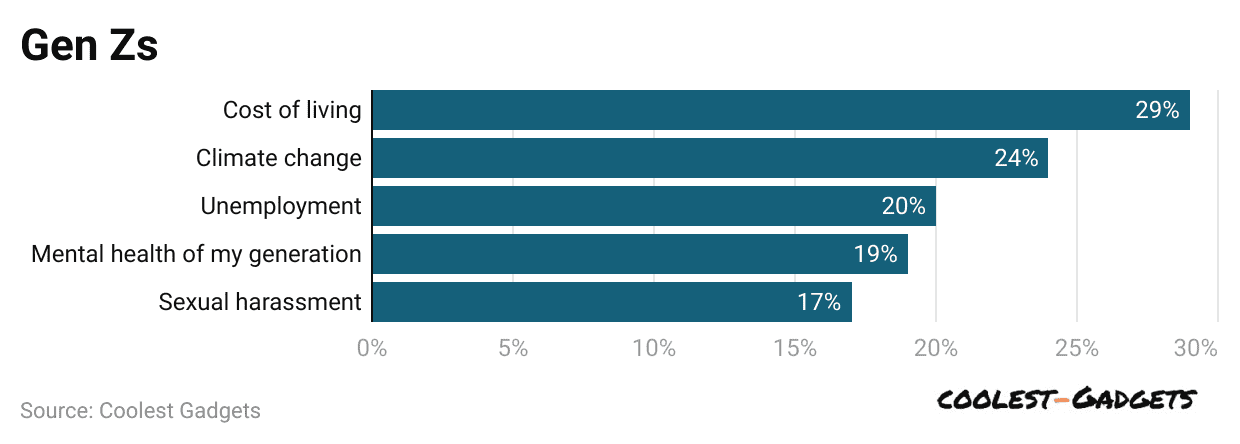 (Reference: enterpriseappstoday.com)
(Reference: enterpriseappstoday.com)
- 62% of Gen Z are more likely to buy from companies with good ratings and reviews.
- Generation Z is very active on social media, with 98% of 18-—to 24-year-olds using at least one platform regularly.
- In terms of education, 59% of Generation Z plans to attend college. They also care deeply about the environment, with 61% believing businesses should do more to fight climate change.
- Almost 40% of Gen Z plans to quit their job in the next two years.
- By 2026, Gen Z will become the first generation in the US, where most people are non-white.
- Only 11% of Gen Z are married or have kids. In the 2020 election, 10% of eligible voters were from Gen Z.
- Mental health is a major issue for this generation, with 91% reporting feeling stressed or anxious.
- 55% of Gen Z use their smartphones for five or more hours each day.
- Gen Z Statistics stated that almost 33% of Gen Z have been convinced to buy something after seeing it on social media.
Gen Z Brand Preference Statistics
- Nearly 91% of Gen Zers think it’s important for brands to be genuine.
- 67% like brands that are honest and clear.
- Almost 52% trust influencers more than traditional celebrities when they recommend a brand.
- 70% of Gen Z believe companies should stand up for social causes.
- Gen Z Statistics stated that almost 61% are more likely to support brands that share their values.
- 55% prefer buying from brands that work to create a positive impact on society or the environment.
- 83% of Gen Zers feel it’s important for brands to show diversity in their ads, and 64% expect to see diversity and inclusion in marketing campaigns.
- 62% are more likely to buy from brands that feature people of different backgrounds in their advertisements.
- Gen Z Statistics stated that almost 81% of Gen Zers are worried about the environment and believe individuals should act to help solve environmental problems.
- 73% are willing to spend more on products that are sustainable and eco-friendly.
Gen Z Social Media Statistics
- Gen Z Statistics stated that almost 54% of Gen Z say they spend at least four hours on social media every day.
- 97% of Gen Z shoppers say social media is their main source of inspiration when buying products.
- Almost 70% of Gen Z visit YouTube every day.
- 59% of Gen Z think Instagram ads have more influence on their buying choices than ads on TikTok (57%), Facebook (36%), or Twitter (29%).
- Nearly 42% of Gen Z have bought something after watching a haul video on TikTok.
- Gen Z feels that older platforms like Twitter and Facebook are less authentic because they focus on engagement through algorithms.
- 88% of Gen Z use at least one social media platform daily.
- TikTok, Snapchat, and Instagram each have over 80% of Gen Z users.
- Discord is growing quickly in popularity among Gen Z.
- Almost 59% of Gen Z say that Instagram ads influence their buying decisions more than ads on TikTok (57%), Facebook (36%), or Twitter (29%).
- According to Jungle Scout, 71% of Gen Z adults plan to shop directly on Instagram.
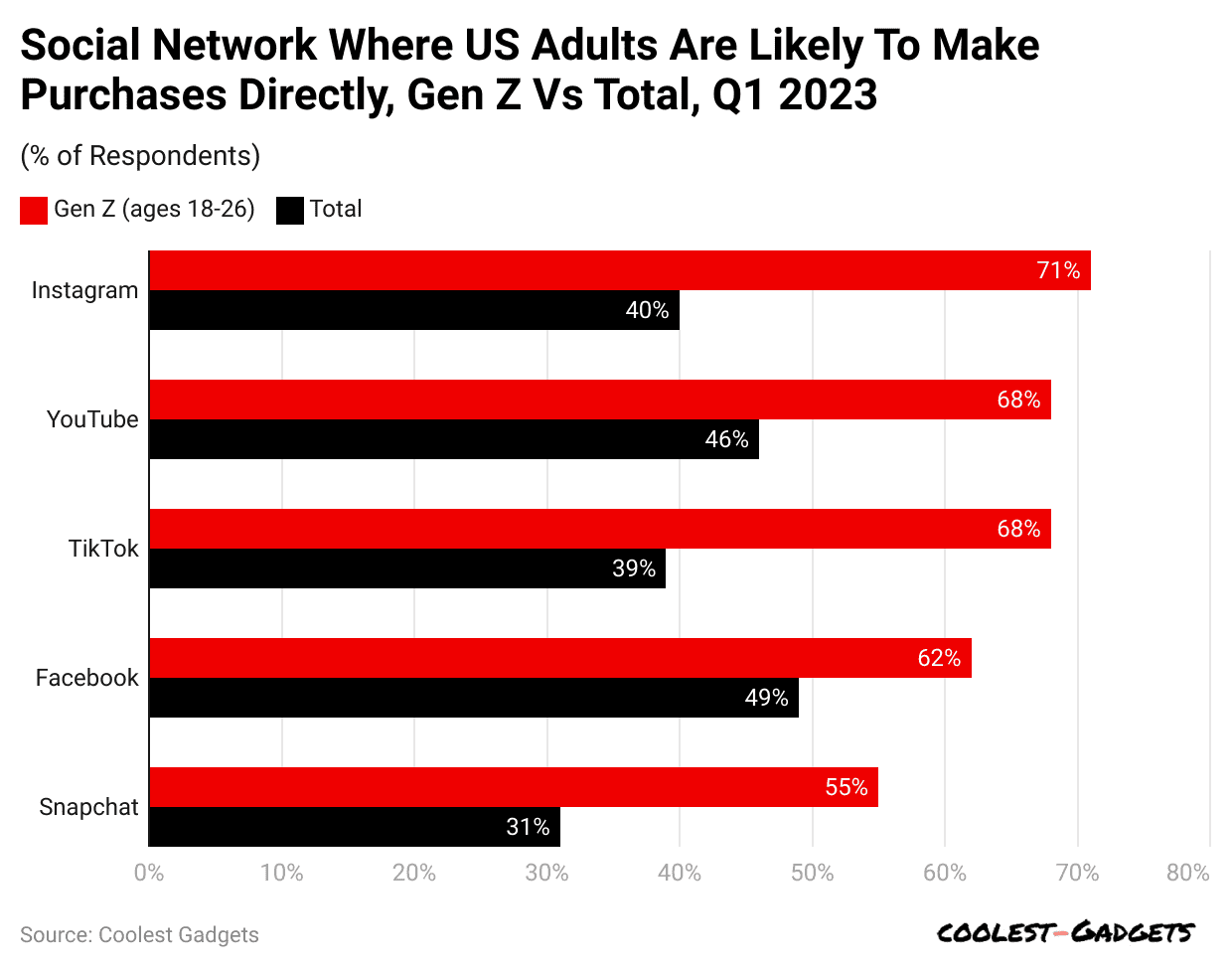 (Reference: khrisdigital.com)
(Reference: khrisdigital.com)
- Gen Z and Millennials spend about two hours and 44 minutes on social media every day on average.
- 46% of Gen Z TikTok users make impulse purchases online every 2 to 3 weeks.
- Gen Z Statistics stated that almost 56% of Gen Z use social media while watching TV.
- 40% of Gen Z use TikTok to find lunch spots.
- Discord has become very popular among Gen Z.
- By 2027, 80.9% of Gen Z will use Instagram, while 71.9% will be on TikTok.
- Snapchat is more popular with Gen Z teens (ages 12-17) than with Gen Z adults (ages 18-24).
- Over 80% of Gen Z users are on TikTok, Snapchat, and Instagram.
- Gen Z teens (ages 14-19) get more of their news from social media and messaging apps than older Gen Z adults (ages 20-24).
- Roughly 52% of Gen Z expect businesses to look at their social media posts.
- 61% of Gen Z want businesses to use their social media activity to learn more about them.
- Gen Z Statistics stated that almost 64% of Gen Z expect a personalized social media experience based on their past interactions.
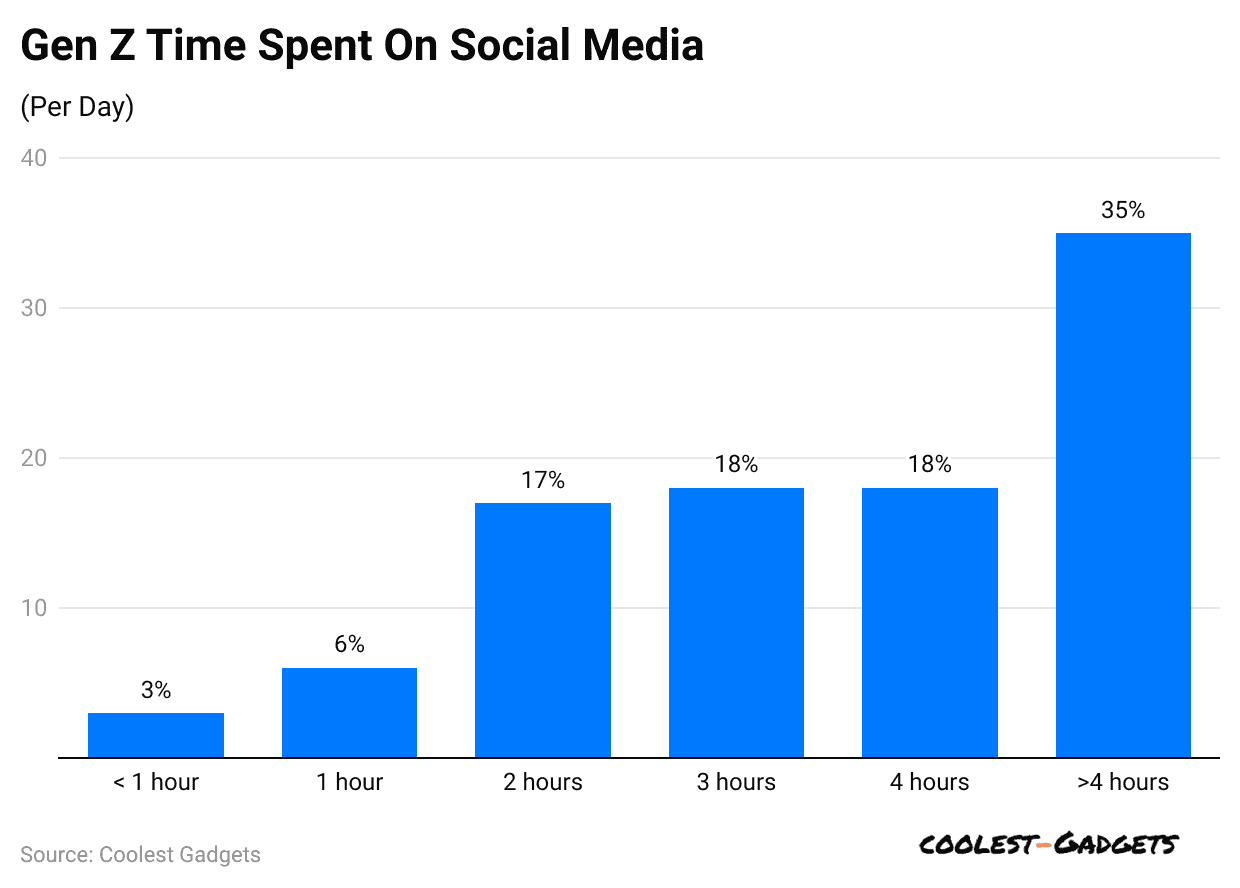 (Reference: oberlo.com)
(Reference: oberlo.com)
- 40% of Gen Z prefer using TikTok over Google to search for information.
- Gen Z feels that older platforms like Twitter and Facebook are less authentic because they focus too much on engagement-driven algorithms.
- Almost 83% of Gen Z say social media gives them most of their shopping ideas.
- 61% of Millennials and Gen Z report being addicted to their smartphones, while 39% say they are not.
- When comparing ten social media platforms, Gen Z uses almost all of them more than Millennials.
Gen Z Workforce Statistics
- By 2030, Gen Z is expected to make up 30% of the total workforce.
- Around 65% of Gen Z feel ready and eager to learn new skills.
- 49% of Gen Z employees prefer using instant messaging apps for work-related communication.
- 70% of recent Gen Z graduates expect to get a promotion within their first 18 months on the job.
- Gen Z Statistics stated that almost 74% of Gen Z would leave a job if the pay were too low.
- 60% of Gen Z expect their managers to care about their well-being.
- 92% of Gen Z graduates want to be able to talk about mental health at work.
- Gen Z Statistics stated that almost 40% of leaders believe Gen Z needs to be fully prepared for work.
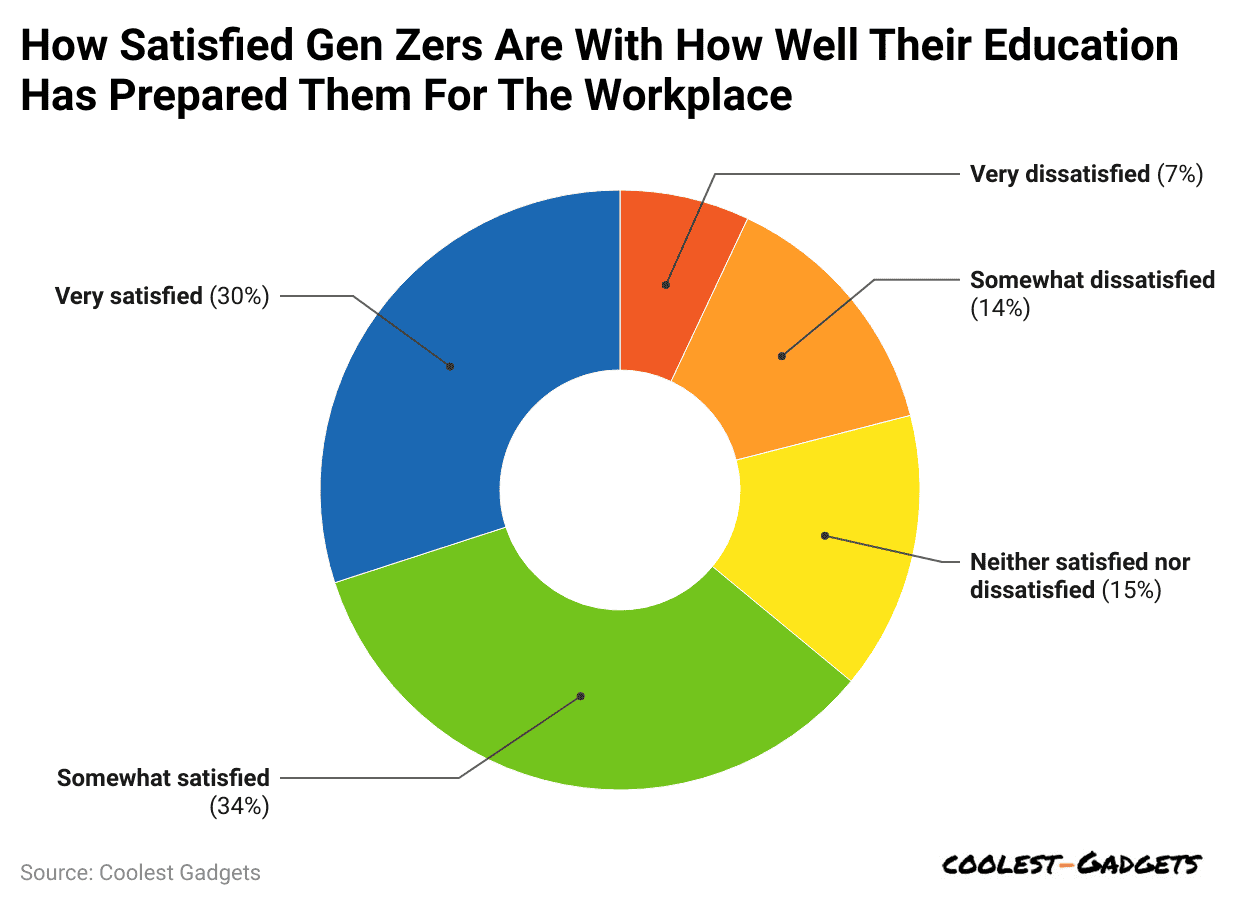 (Reference: talentlms.com)
(Reference: talentlms.com)
- 42% of managers say that Gen Z has made the workplace more casual.
- 75% of managers need help to meet the work expectations of Gen Z.
- Nearly 86% of Gen Z workers want jobs that have a meaningful purpose.
- Almost 65.5% of Gen Z expect their pay to go up every 6 months.
- 74% of Gen Z would leave a job if the salary weren’t needed to be better.
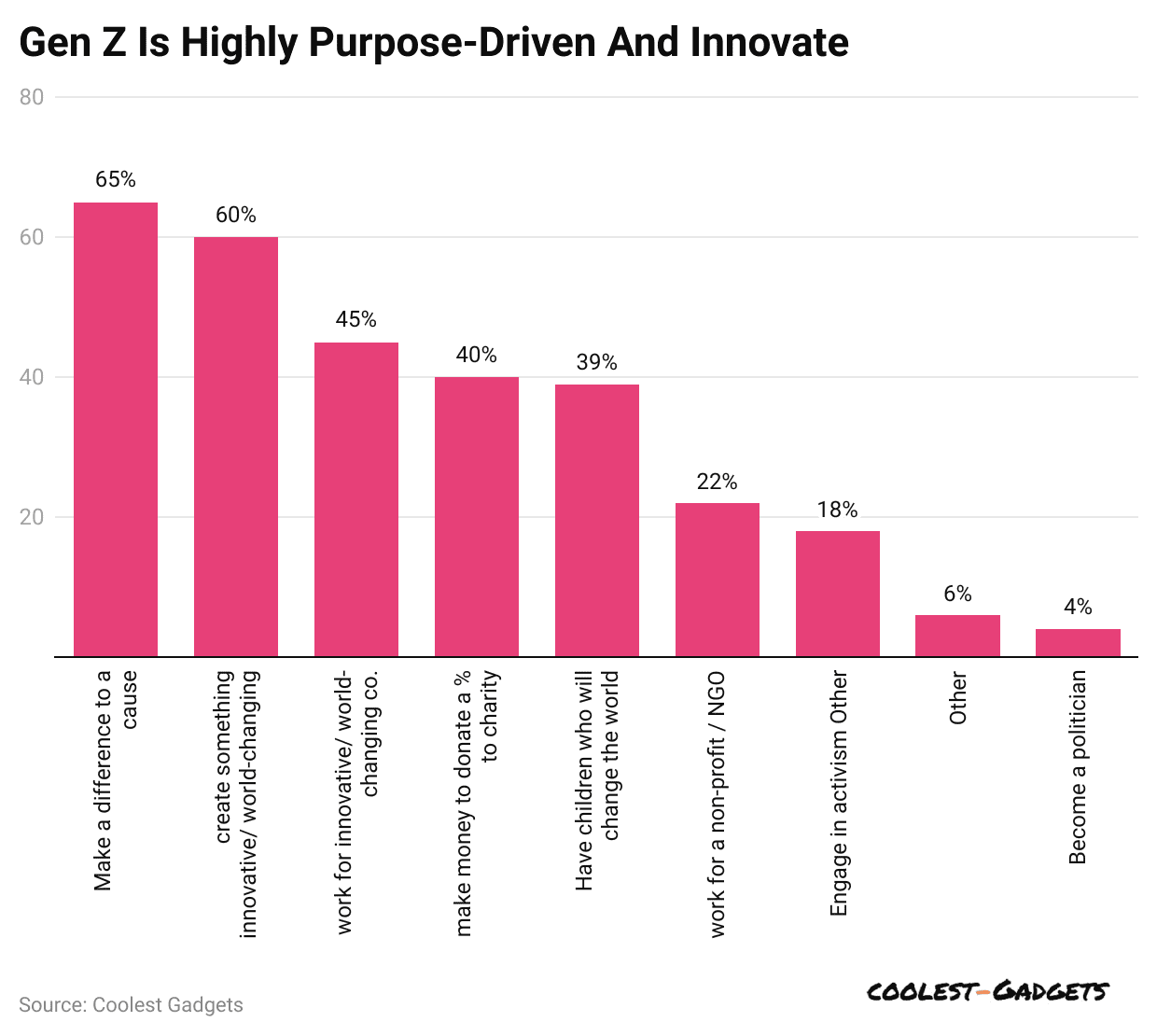 (Reference: brinknews.com)
(Reference: brinknews.com)
- 78% of Gen Z want to be recognised and appreciated for their work.
- Gen Z Statistics stated that almost 43% of Gen Z want to have a say in company decisions.
- Almost 44% of Gen Z would turn down a job if it goes against their values or beliefs.
- 81% of Gen Z want honesty and transparency at work.
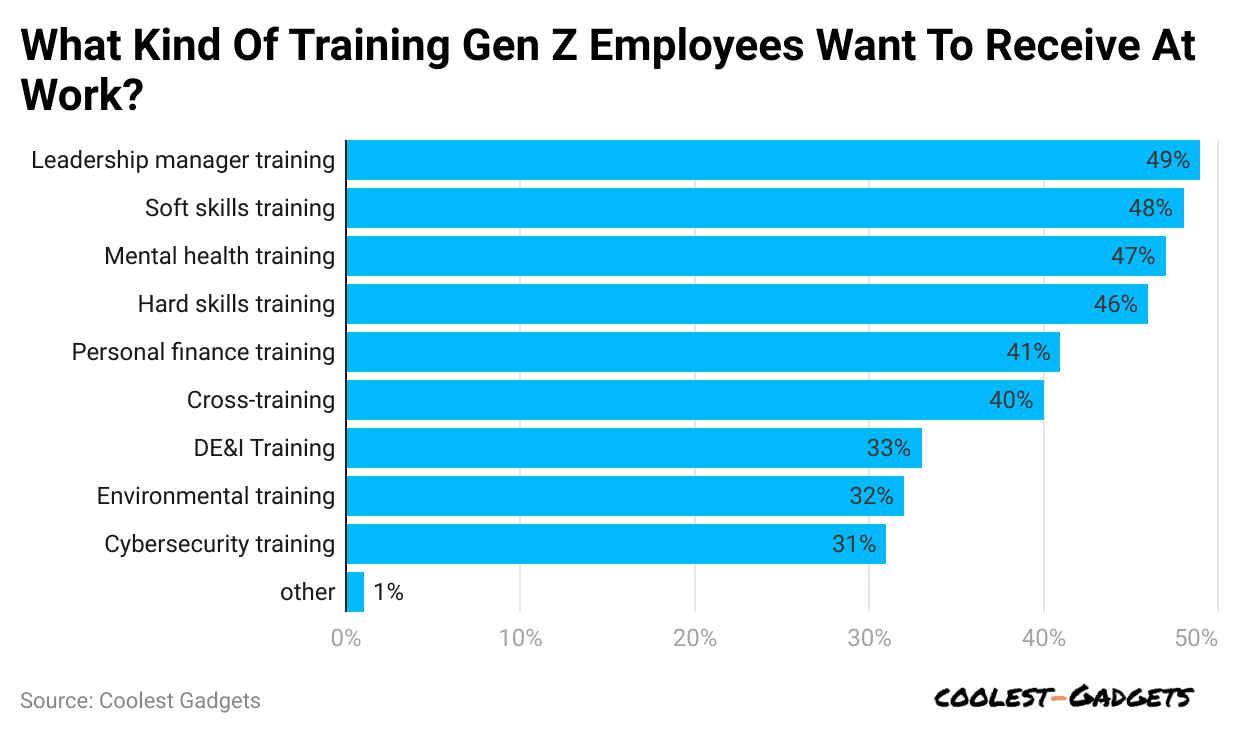 (Reference: talentlms.com)
(Reference: talentlms.com)
- Gen Z Statistics stated that almost 45% of hiring managers say Gen Z is the hardest generation to work with.
- 4% of managers think regular feedback is a great way to motivate Gen Z employees.
Gen Z Behavioral Statistics
- In 2022, Gen Z spent an average of 7 hours and 38 minutes online every day, with social media taking up about 40% of that time.
- They use their smartphones for everything from shopping and working to finding information and staying entertained.
- Almost all Gen Z (97%) use social media, with 38% of U.S. Gen Z spending more than 4 hours per day on these platforms.
- YouTube is their top platform, followed by TikTok and Instagram.
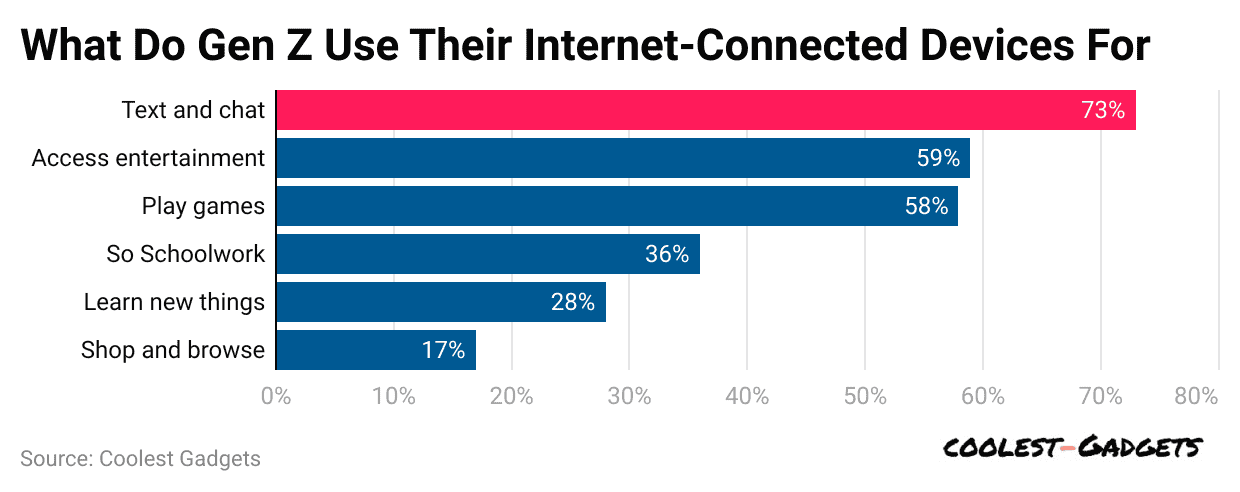 (Reference: 99firms.com)
(Reference: 99firms.com)
- Gen Z watches more video content than Millennials, which explains their preference for platforms like YouTube, TikTok, and Instagram.
- Gen Z sees social media as a space for expressing themselves, finding like-minded people, getting recommendations, and staying updated on news. They love memes and viral videos, with more than half saying they watch this kind of content every month.
- Gen Z is active in advocating for social change.
- Around 80% in both the US and UK are ready to take action on issues like systemic racism, climate change, and gender equality.
- They often use social media to raise awareness and push for change.
- Gen Z is deeply worried about the environment. They believe urgent action on climate change is necessary, especially with growing reports of extreme weather, wildfires, and melting glaciers.
- Subcultures for Gen Z are more focused on aesthetics and personal expression than on traditional group identities.
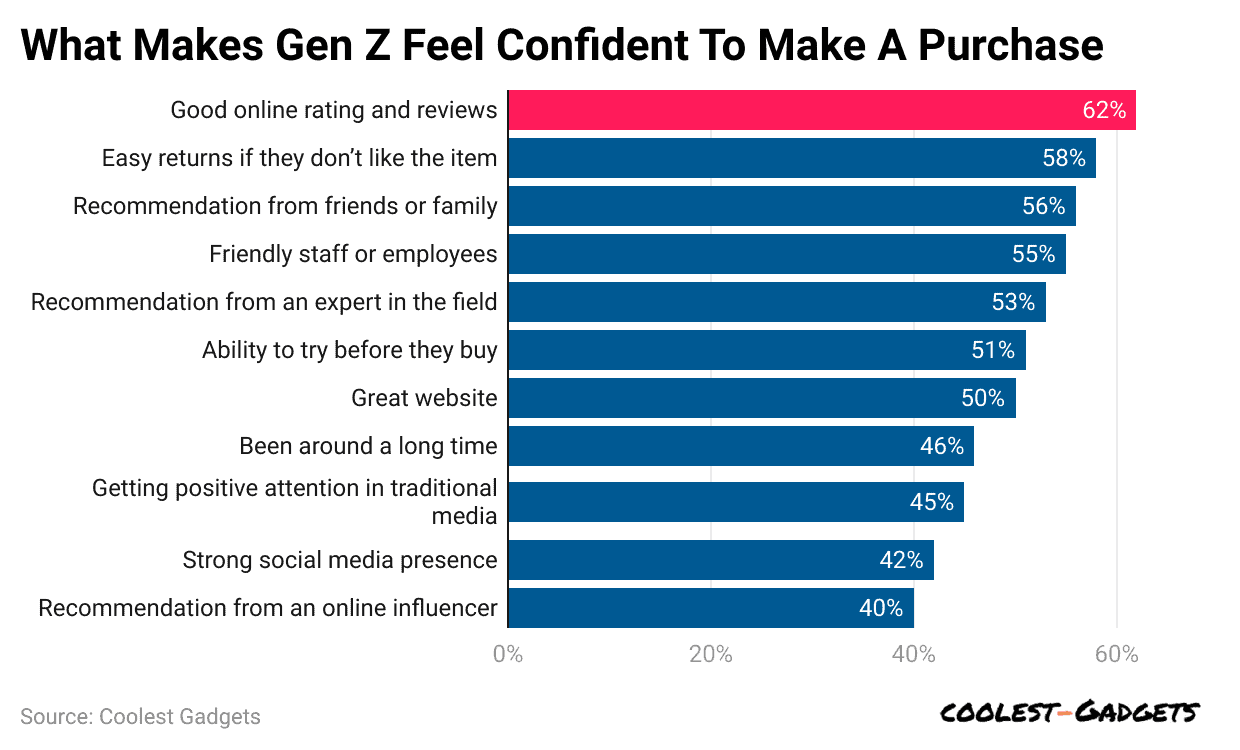 (Reference: 99firms.com)
(Reference: 99firms.com)
- Gen Z creates their own trends, often online, with styles like “Cottagecore” gaining popularity during the COVID-19 lockdowns.
- Gen Z drinks less than previous generations, with many choosing not to drink for health and safety reasons.
- About 14% in the UK and 15% in the US have quit drinking entirely.
- Gen Z tends to look to the government, rather than businesses or individuals, to solve large societal problems.
- Around 70% believe the government should do more to address issues like racism, climate change, and gender equality.
- Having grown up during the 2008 recession and the COVID-19 pandemic, Gen Z is financially cautious. They are more likely to save money and look for good deals, valuing quality and value for money.
- Gen Z is leading the charge in cryptocurrency adoption, with 17% owning Bitcoin or another form of crypto as of 2023.
- As many of them are still young, their interest in digital currencies is only expected to grow in the future.
The Impact Of COVID-19 On Gen Z’s Future And Present
- Gen Z Statistics stated that almost 50% of older Gen Z (ages 18-23) in the US have lost their jobs or had their pay reduced because of the pandemic.
- Over 30% of older Gen Z (18-24) are worried about money problems caused by the pandemic.
- 46% of older Gen Z have borrowed money from family or friends since the pandemic began.
- 56% of Gen Z say the pandemic has affected their social life.
- Gen Z Statistics stated that almost 36% of Gen Z say COVID-19 has changed their career plans.
 (Reference: financesonline.com)
(Reference: financesonline.com)
- 51% of Gen Z teens (13-17) and 67% of Gen Z adults feel like it’s harder to plan for the future because of the pandemic.
- Gen Z Statistics stated that almost 47% of Gen Z say the pandemic has hurt their family’s finances.
- 40% of Gen Z say their mental health has been negatively affected by the pandemic
- Nearly 34% of Gen Z adults say their mental health got worse in 2020 compared to the previous year.
- 81% of Gen Z teens (ages 13-17) say that school closures due to the pandemic have negatively impacted them.
- Almost 87% of Gen Z college students say that school is a major cause of stress for them.
Leading Source Of Data Among Gen Z Customers Researching Products Globally
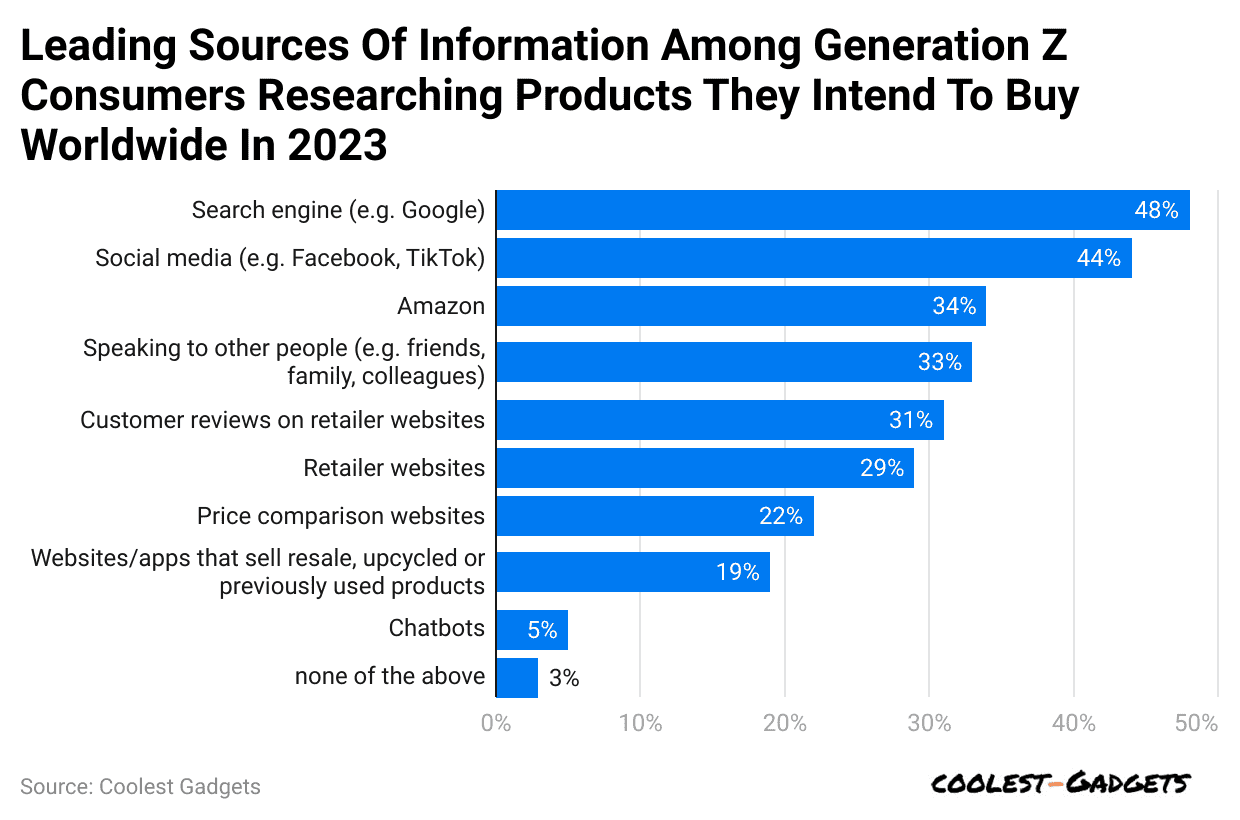 (Reference: statista.com)
(Reference: statista.com)
- In 2023, about half of Generation Z used search engines like Google when researching products they wanted to buy.
- This made search engines the most common way people gather information before purchasing. Many also turned to social media for product research.
- Millennials also used these methods, but they were more likely than Gen Z to visit price comparison websites.
Gen Z Smartphone Ownership Statistics
- Around 97% of Generation Z (ages 13-24) own a smartphone.
- Among them, 84% consider their smartphone to be the most important device they use.
- The most popular smartphone brands for Gen Z are Apple (iPhone) and Samsung.
- Apple iPhones are especially popular, with about 85% of Gen Z having one. On average, Gen Z spends 4.5 hours a day on their smartphones.
- Gen Z’s main smartphone activities include using social media, messaging, streaming music and videos, playing games, and accessing educational content.
- Gen Z also uses their smartphones to research products before buying.
- Around 65% of Gen Z smartphone users research products on their devices before making a purchase.
- Additionally, about 55% of Gen Z smartphone users say that social media platforms and mobile apps influence their buying decisions.
Difference Between Gen Z vs Millennials
- Gen Z has an attention span of just 8 seconds. In comparison, Millennials can focus for 12 seconds.
- This means marketers need to get to the point quickly in ads or posts because Gen Z will only give a few seconds of their time before moving on.
- 53% of Gen Z bought something using their phone in the past six months. This shows that more than half of Gen Z prefer shopping on their smartphones.
- On the other hand, only 37% of Millennials have bought something online in the last six months, as they still enjoy going to physical stores.
- Gen Z Statistics stated that almost 70% of Gen Z think earning money is very important, while only 12% care about being famous. This shows that most of Gen Z sees money as a key goal, compared to 60% of Millennials.
- However, only 12% of Gen Z are interested in fame, while just 7% of Millennials feel the same.
- 59% of Gen Z has enrolled in college, while only 53% of Millennials have. Gen Z seems more focused on education and less likely to drop out.
- Only 6% of Gen Z did not finish high school, compared to 12% of Millennials.
- Also, 60% of Gen Z aged 18-20 are in college, aiming to graduate, while 53% of Millennials are in college.
- Gen Z Statistics stated that almost 16% of both Gen Z and Millennials worry about the cost of education. However, Gen Z is more concerned about paying for their education.
- About 21% of Gen Z is stressed about tuition, compared to only 10% of Millennials.
Conclusion
Gen Z is a generation that is highly connected to technology and cares deeply about social issues like mental health and equality. They are expected to be the most educated generation ever. Right now, Gen Z has many opportunities in areas like technology, education, and personal growth.
However, they also face challenges like job dissatisfaction and mental health concerns. In the next few years, we will see how Gen Z’s full potential unfolds and the impact they will have on the world. We have shed enough light on Gen Z Statistics through this article.
Sources
FAQ.
There are 68.6 million Gen Z people living in the United States right now. 54% of Gen Z spend over 4 hours a day on social media. Globally, Gen Z makes up about 30% of the population and is expected to be 27% of the workforce by 2025.
Shambo said, “The idea that Gen Z is hard to work with often comes from not understanding them well enough or adjusting to their needs. By giving them chances to grow, offering meaningful work, and creating an inclusive environment, we can tap into their full potential and make our workplaces better.”

Saisuman is a talented content writer with a keen interest in mobile tech, new gadgets, law, and science. She writes articles for websites and newsletters, conducting thorough research for medical professionals. Fluent in five languages, her love for reading and languages led her to a writing career. With a Master’s in Business Administration focusing on Human Resources, Saisuman has worked in HR and with a French international company. In her free time, she enjoys traveling and singing classical songs. At Coolest Gadgets, Saisuman reviews gadgets and analyzes their statistics, making complex information easy for readers to understand.




